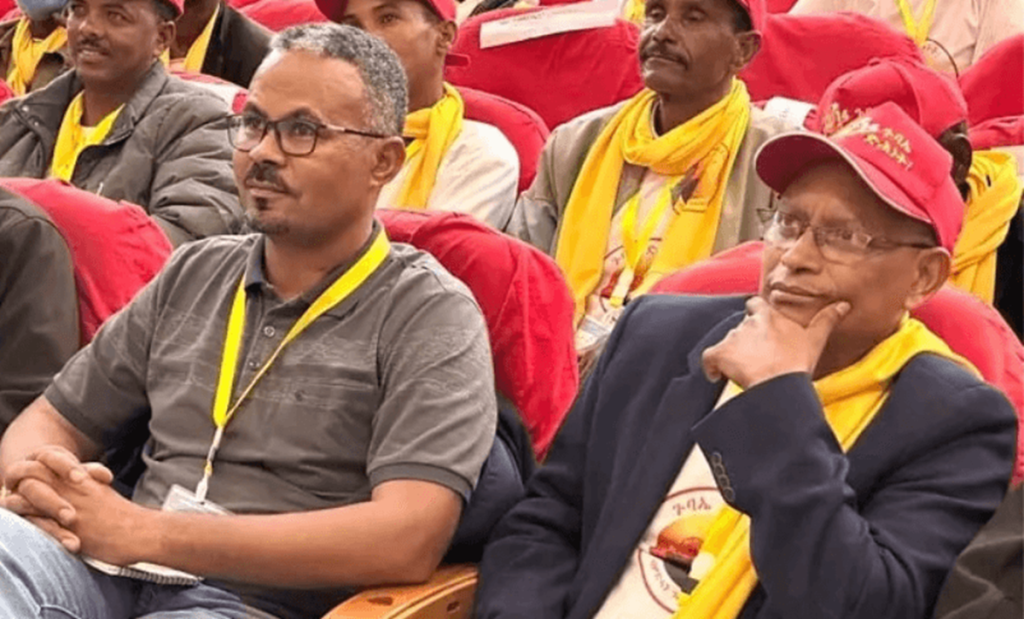Coffee in Ethiopia is more than an agricultural commodity and a source of income for millions because it is deeply embedded in our society and culture. Or as a coffee farmer from Jimma expressed it more eloquently: “Coffee is our life and our security. It is the secret for our survival: we eat, drink, and dress coffee. It helps to send our children to school from the income it generates.” And if coffee is planted under the shade of trees, it can boost agroecological benefits and contribute to biodiversity.
Four million smallholder farmers in Ethiopia are growing traditionally cultivated, organic coffee, bringing joy to millions of consumers every day. 95 percent of the country’s coffee crop comes from smallholders, with about one half being consumed domestically and the other half internationally, often sold under iconic brands. Coffee, the backbone of our agricultural economy, is the top export product and contributes about five percent of Ethiopia’s GDP. Foreign exchange from coffee reached USD 1.4 billion last year alone, about a third of the country’s total foreign exchange earnings.
While Ethiopia’s coffee farmers have reported major achievements related to growth in production and exports over the last decade, poor agricultural practices, pest and disease outbreaks, greater vulnerability to climate change, and an ageing stock of coffee trees are holding the sector back from attaining its full potential. It is the latter constraint that raises immediate alarm.
Most coffee trees in Ethiopia were planted over three decades ago, resulting in about 80 percent of the trees being classified as old coffee. Contrast that with Colombia, which has only about nine percent of its coffee trees classified as aged and produces about twice as much coffee as Ethiopia. The negative effect of old coffee trees in Ethiopia is profound with average productivity ranging between 0.5 to 0.8 kg per tree.
Raising coffee tree productivity is thus of direct economic concern for our farmers and experts seeking to grow the coffee sector. To sustainably improve their yield, farmers must continually replace or maintain aging coffee trees. This can boost average productivity to 3 to 5 kg per tree.
Despite the huge yield difference and other benefits of maintaining coffee trees, farmers have been reluctant to make such investments. Upfront expenses, for labor and tools to stump old trees, or for purchasing new seedlings to replant, are high. Replacing or stumping old trees costs around USD 3,700 and 1,300 per hectare, respectively. Even if farmers can cover these initial charges, they must also have the capacity to tolerate revenue loss over three to four years until yield gains from coffee tree renovation or rehabilitation kick in. For most smallholders, with no or very limited alternative sources of income, this is too challenging.
The government, financial service providers, and development cooperation partners have initiated credit and technical support projects to overcome this challenge. However, these projects have not yet scaled widely. They have had difficulties addressing multiple root causes and lacked coordination to ensure sustainable financial and other support over the long-term.
Sustainable, long-term strengthening of the coffee sector will require putting interventions into a broader context of building a more sustainable agricultural production system overall. This will require significant capital, which in turn will require a new structured setup that encourages financial and technical support, transparent fund management, follow-up, and monitoring.
New capital bringing coffee farms back to their prime yield can be secured through collaborative efforts involving public and private actors providing innovative financing solutions to farmers. Establishing a new national funding facility for coffee renovation and rehabilitation would be a key step in that direction.
Such a facility could be set up to accommodate different blended financing mechanisms that combine public and private sector funding, impact investors, and philanthropic organizations. With such a facility, for example, private sector capital from domestic coffee exporters and roasters could be successfully unlocked and help in de-risking investments for financial institutions through risk sharing and creating incentives for smallholders to advance more sustainable coffee production practices.
FOLU Ethiopia and the Ethiopian Coffee and Tea Authority (ECTA) have joined forces to identify the necessary actions to establish a new national funding facility that would systematically channel resources to coffee renovation and rehabilitation. Such a facility would mobilize different types of funding from local and international sources.
Ultimately, the funding would help smallholders to improve their livelihoods through increased productivity after their trees have been rehabilitated or rejuvenated. This in turn would enhance the international competitiveness of Ethiopia’s coffee sector, provide other positive economic effects, and boost agroecological and other environmental benefits.










